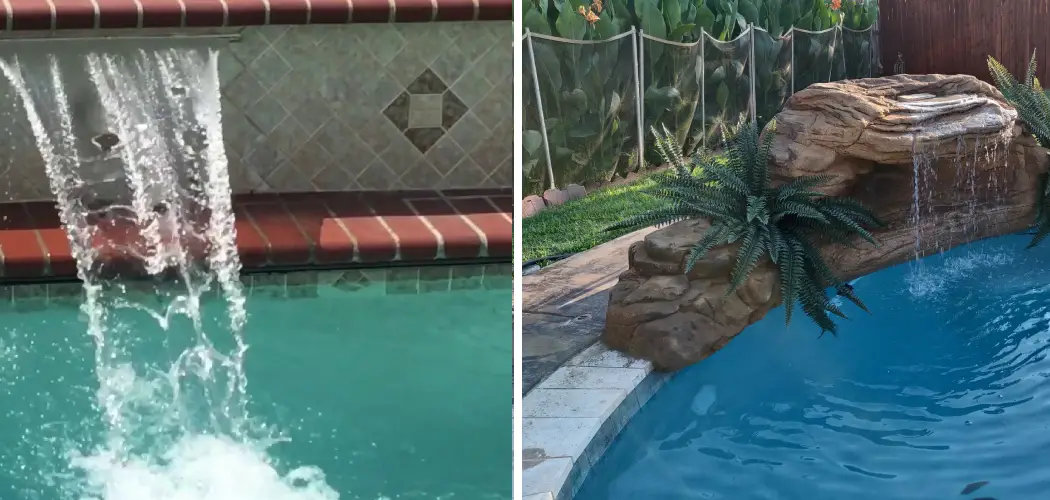A pool waterfall can add a touch of luxury and serenity to your outdoor oasis, creating a soothing ambiance that enhances your swimming experience. However, like any other feature, pool waterfalls are not immune to wear and tear, and one common issue pool owners may face is a leaking waterfall. When you notice water escaping from your waterfall or pooling around its base, it’s crucial to address the problem promptly to prevent further damage and water wastage.
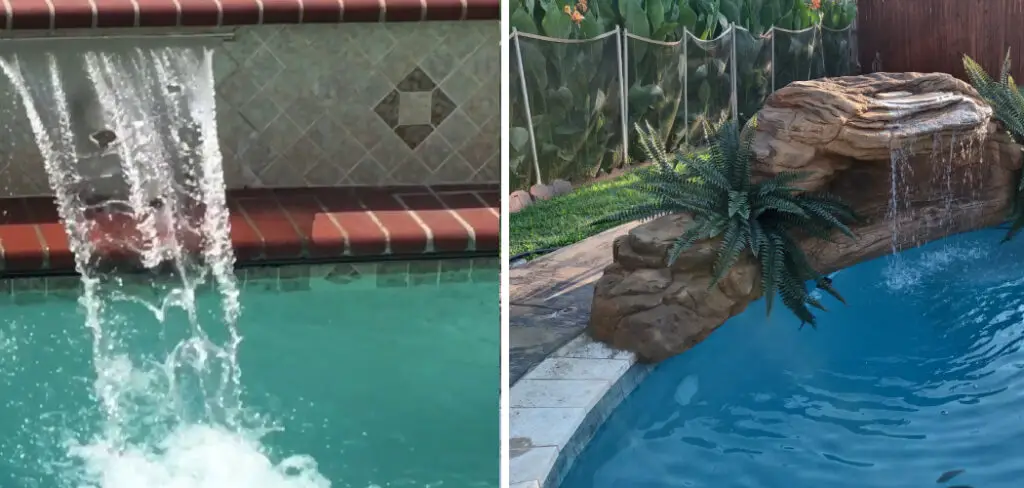
Fixing a leaking pool waterfall might seem daunting, but with the right approach and some basic knowledge, you can tackle this issue successfully. In this article, we will explore how to fix a leaking pool waterfall, step-by-step instructions on identifying and fixing the problem, and tips on preventive maintenance to ensure your pool waterfall continues to enhance your outdoor space for years to come. Whether you’re a seasoned pool owner or a newbie, this guide will help you restore the tranquility of your poolside oasis.
Importance of Addressing a Leaking Pool Waterfall
A leaking pool waterfall may seem like a minor issue, but it can actually cause significant damage if left unaddressed. Not only can it lead to higher water bills and potential damage to your pool pump, but it can also create safety hazards for anyone using the pool.
One of the main reasons why addressing a leaking pool waterfall is important is to prevent further damage and potential costly repairs. A small leak may seem insignificant, but over time it can cause significant damage to the structure of your pool and surrounding areas.This can result in expensive repairs or even require a complete overhaul of your pool area.
Moreover, leaving a leaking pool waterfall untreated can also lead to increased water bills.
As the water constantly flows out of the pool, it will need to be refilled more frequently, resulting in higher water bills. This can add up over time and become a significant financial burden.
In addition to the potential physical and financial damage, a leaking pool waterfall can also create safety hazards for anyone using the pool. The constant flow of water can create slippery surfaces around the pool area, increasing the risk of slips and falls. It can also cause electrical hazards if the water comes into contact with any pool equipment, such as lights or pumps.

Ignoring a leaking pool waterfall can also lead to negative effects on the overall aesthetic of your pool. The constant dripping of water and potential algae growth can make your pool area appear neglected and uninviting. This can impact your enjoyment of the pool and deter others from using it as well.
10 Methods How to Fix a Leaking Pool Waterfall
1. Check the Pool Waterfall for Clogs
The first step to fixing a leaking pool waterfall is to check for clogs. If the waterfall is clogged, it can cause water to back up and leak out of the sides or bottom of the waterfall. To check for clogs, shut off the pump and use a garden hose to flush out any debris that may be blocking the flow of water.
2. Inspect the Waterfall Basin
The next step is to inspect the waterfall basin for cracks or other signs of damage. If there are any visible cracks in the basin, they should be repaired immediately as they can lead to further water leakage. Additionally, make sure that all of the seals around the basin are intact, as damaged seals can also cause water leakage.
3. Check for Leaks Around Pipes
Next, you will need to check for leaks around any pipes leading into or out of the pool waterfall. This includes checking both above and below-ground pipes, as leaks in either location can lead to water loss from your pool waterfall. If you find any leaks, repair them immediately using a waterproof sealant or pipe tape.
4. Clean Out Any Debris
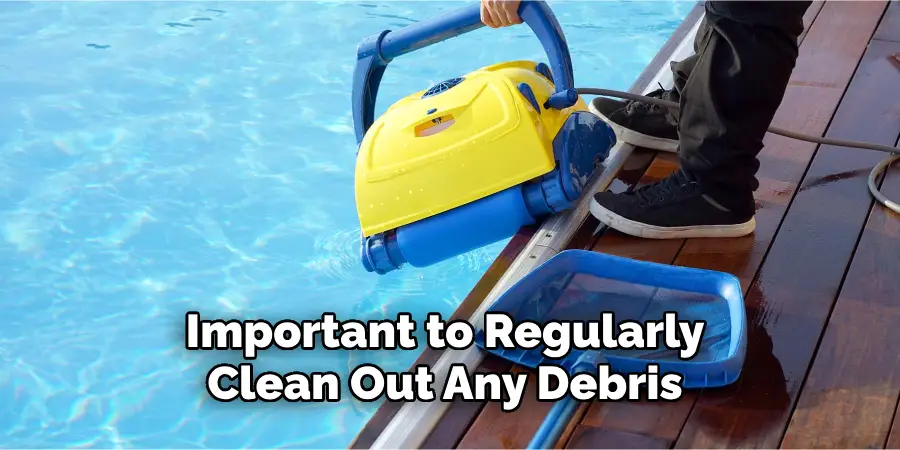
Debris, such as leaves and twigs, can accumulate in and around your pool waterfall over time and can cause blockages, which lead to water leakage. To prevent this from happening, it is important to regularly clean out any debris that has accumulated in and around your pool waterfall using a net or vacuum cleaner specifically designed for this purpose.
5. Replace Damaged Parts
If any parts of your pool waterfall are visibly damaged or worn down, they should be replaced immediately as these parts may no longer be able to hold back water properly which could lead to further leakage problems in your pool area. Make sure that you purchase replacement parts that are compatible with your existing system so that you do not have compatibility issues when installing them in your pool area.
6. Test Water Pressure Settings
Another potential cause of leaking pool waterfalls is incorrect water pressure settings on your pump or filter system. To ensure that your pressure settings are correct, you will need to test them using a pressure gauge specifically designed for this purpose; if needed, adjust these settings accordingly until you achieve optimal results with minimal leaking from your pool waterfall area.
7. Install a Gutter System
Installing a gutter system around the perimeter of your pool area can help reduce water loss from leaking pools by collecting excess rainwater before it has an opportunity to enter your pool area and potentially leak out through cracks or gaps in its structure. Make sure that you install gutters at least one foot away from all walls surrounding your pool area so that they do not interfere with its structural integrity.
8. Use Sealants Around Cracks
If there are any cracks present in either the foundation or walls surrounding your pool area, make sure that you apply sealant around them immediately, as these cracks can become larger over time due to exposure to moisture and eventually lead to further water leakage problems. Make sure that you use sealants specifically designed for use underwater so that they do not erode over time due to prolonged exposure.
9. Check Pool Equipment Regularly
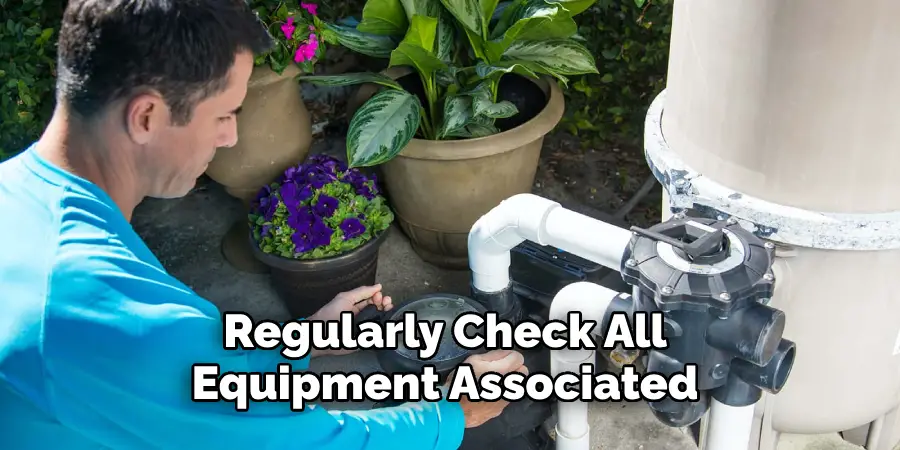
Regularly check all equipment associated with your swimming pool, including pumps, filters, skimmers, ladders, etc., as faulty equipment may contribute to increased levels of leakage. Make sure that all equipment is functioning properly before each swimming season begins so that potential problems are identified and addressed early on.
10. Monitor Your Pool’s Water Level Regularly
Finally, make sure that you monitor your swimming pool’s water level regularly throughout each swimming season. This will help identify potential issues such as evaporation or slow drainage, which could potentially result in significant amounts of water loss over time if left unchecked.
Things to Consider When Fixing a Leaking Pool Waterfall
When it comes to fixing a leaking pool waterfall, there are several important factors to consider. These can include the type of material used for the waterfall, the location and severity of the leak, and potential underlying causes. It is important to thoroughly assess these factors in order to determine the best course of action for repairing your pool waterfall.
Type of Material
The type of material used for your pool waterfall can greatly impact the repair process. Different materials may require different techniques and tools for fixing leaks. For example, if your waterfall is made from concrete or stone, you may need to use specialized sealants or patching materials. On the other hand, if your waterfall is made from vinyl or fiberglass, you may need to use adhesive patches or replace damaged portions altogether.
Location and Severity of Leak
Another important factor to consider is the location and severity of the leak. Is the leak coming from a small crack or hole, or is it a larger tear in the material? Is the leak located near the top of the waterfall, where water typically flows, or is it at the base where structural damage may occur? These details can greatly impact the repair process and should be carefully assessed before beginning any repairs.
Potential Underlying Causes
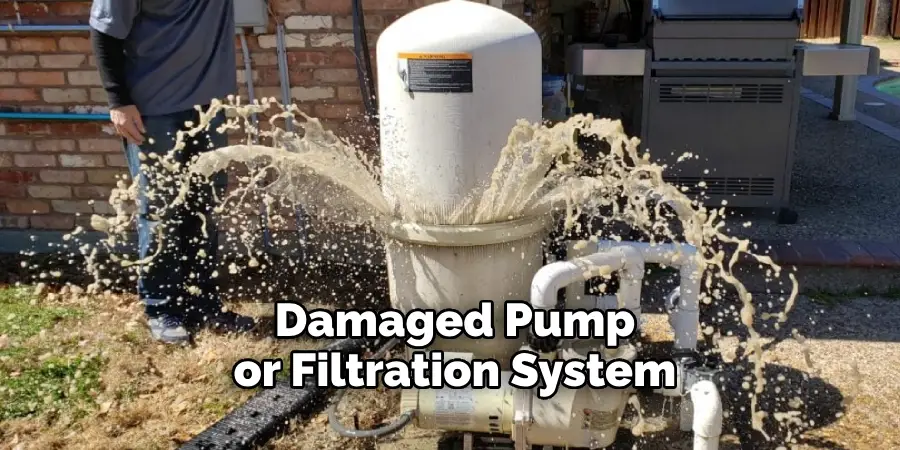
In some cases, a leaking pool waterfall may be caused by underlying issues such as a damaged pump or filtration system. It is important to address these potential causes in order to prevent future leaks and ensure the longevity of your repairs. If you are unsure about the cause of the leak, it may be best to consult a professional for assistance.
Conclusion
Overall, repairing your leaking pool waterfall doesn’t have to be a stressful process. By rechecking for plumbing and crack leaks once in a while and regularly cleaning the pool, you can ensure that your pool waterfall remains safe and functional. With the right tools, some basic knowledge, and dedication, you can save yourself the trouble of having to buy a brand new waterfall altogether!
For all the advice needed on how to fix a leaking pool waterfall, consult an experienced professional or follow step-by-step instructions online that could help you get started. Don’t forget – there is no time like the present to explore the options available regarding repairing your leaking pool waterfall. Let this blog post be your jumping off point for planning what steps to take next in order to get your pool back in perfect condition. Good luck!
About
Outdoor Fixes is a distinguished figure in the world of Diy design, with a decade of expertise creating innovative and sustainable Diy solutions.
His professional focus lies in merging traditional craftsmanship with modern manufacturing techniques,
fostering designs that are both practical and environmentally conscious. As the author of diy,
outdoorfixes delves into the art and science of outdoorfixes-making, inspiring artisans and industry professionals alike.
Education RMIT University
(Melbourne, Australia) Associate Degree in Design (Outdoor Fixes) Focus on sustainable design, industry-driven projects,
and practical craftsmanship. Gained hands-on experience with traditional and digital manufacturing tools, such as CAD and CNC software.
Nottingham Trent University
(United Kingdom) Bachelor’s in outdoorfixes.com and Product Design (Honors) Specialized in product design with a focus on blending creativity with production
techniques. Participated in industry projects, working with companies like John Lewis and Vitsoe to gain real-world insights.
Publications and Impact
In diy, Outdoor Fixes his insights on indoor design processes, materials, and strategies for efficient production.
His writing bridges the gap between artisan knowledge and modern industry needs, making it a must-read for both budding designers and seasoned professionals.

